The Joseon royal tombs include the tombs of royal family members throughout the Joseon Dynasty (1392-1910). These tombs were listed as UNESCO World Heritage items in 2009. Joseon royal tombs are divided into two main categories: the neung (능, 陵) and the won (원, 園). The neung are the tombs of the kings and queens and those of the parents of the kings who were later granted the title of "king" after the enthronement of their sons. The tombs of other royal family members are called won. There are a total of 40 neung tombs and 14 won tombs for the royal Yi dynasty that ruled over Joseon. Most of the royal tombs, all except three, are situated within 40 kilometers of Seoul. These tombs represent both the Joseon people’s belief in the afterlife and Confucian values, such as filial piety, patriotism and manners. They also show off the art, science, beliefs and mindset of society at that time, which have all changed as we have moved into the present.
Hongneung and Yureung are two royal tombs located in Namyangju City, Gyeonggi-do Province.
Hongneung is a royal tomb where the 26th king of Joseon, Emperor Gojong (1852-1919), and his wife, Empress Myeongseong (1851-1895) are buried. Yureung is another royal tomb, adjacent to Hongneung, where Emperor Sunjong (1874-1926) and his wives, the Empress Sunmyeonghyo (1872-1940) and Sunjeonghyo (1894-1966) are buried.
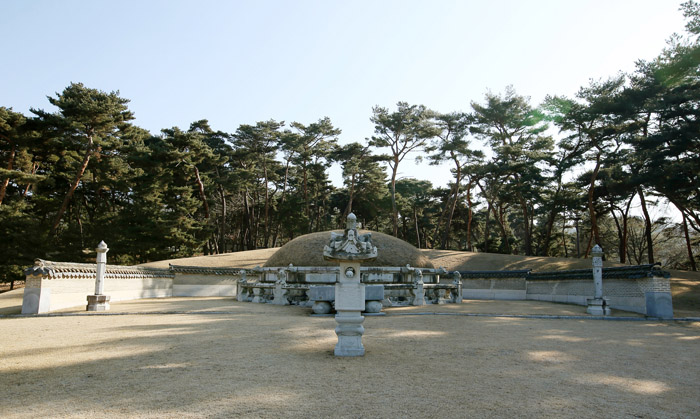
Emperor Gojong and Empress Myeongseong are buried together in the Hongneung tomb.
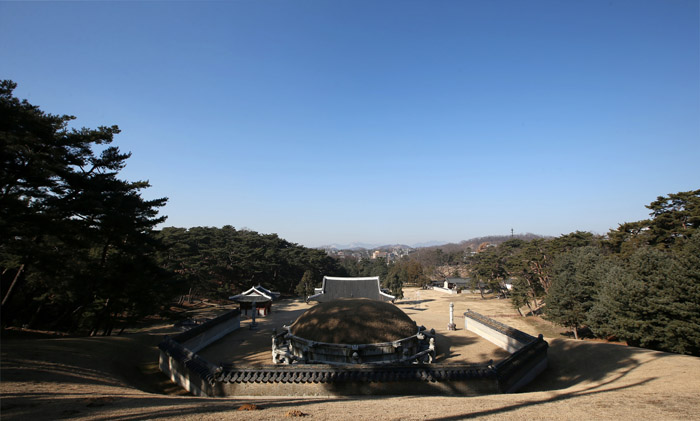
King Gojong proclaimed himself emperor of the Korean Empire in 1897. Accordingly, Hongneung was constructed after the style of the tombs of the Chinese emperors and several changes were made when building the tomb.
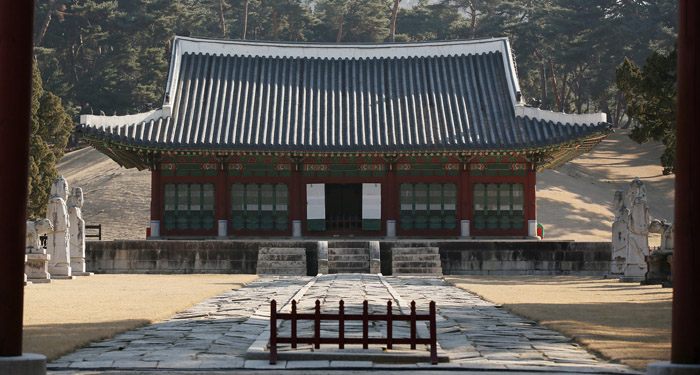
The chimjeon is the name for the king's sleeping quarters in the royal palace. The imperial tombs use this name for the building where the memorial ceremony, or the jesa, is held annually on the death day of the emperor.
One of the most distinguishing features of the imperial tombs is that the stone statues, usually placed around the tomb, stand on either side of the pathway leading to the chimjeon, the building where the memorial ceremony is held. Statues of a civil servant and a military officer on guard stand closest to the building, and they are followed by those of a giraffe, an elephant, a haetae,a mythical creature, a camel and a horse. These exotic animals, usually associated with Chinese imperial tombs, replace the stone statues of the tiger and the sheep that guard the tombs of other Joseon monarchs.
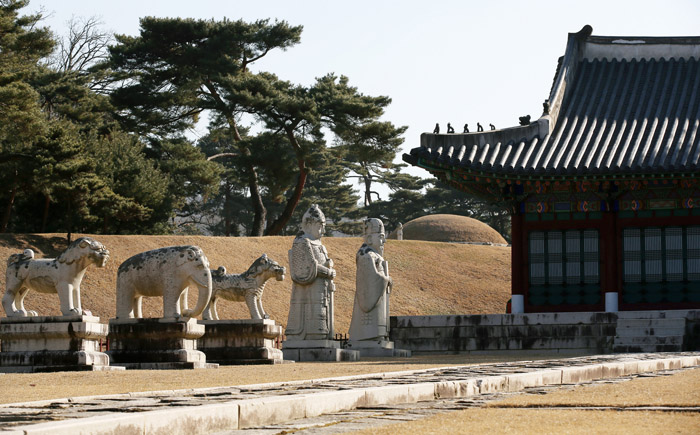
The imperial tombs feature stone statues along the pathway leading to the tomb, rather than adjacent to the tomb itself. The civil servant and military officer are accompanied by a giraffe, an elephant, a lion and other exotic animals.
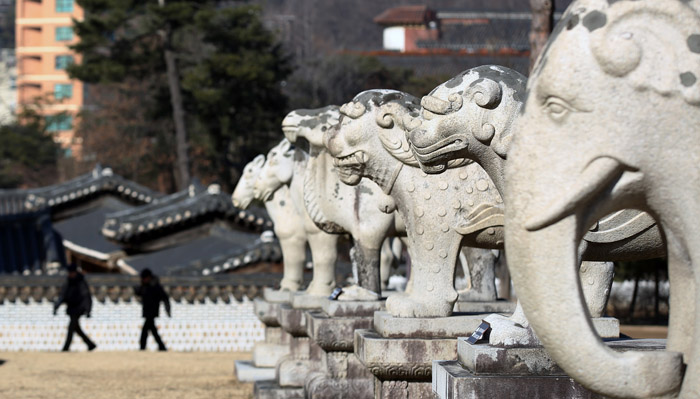
Exotic animals normally found in Chinese imperial tombs line the pathway leading to the Yureung tomb.
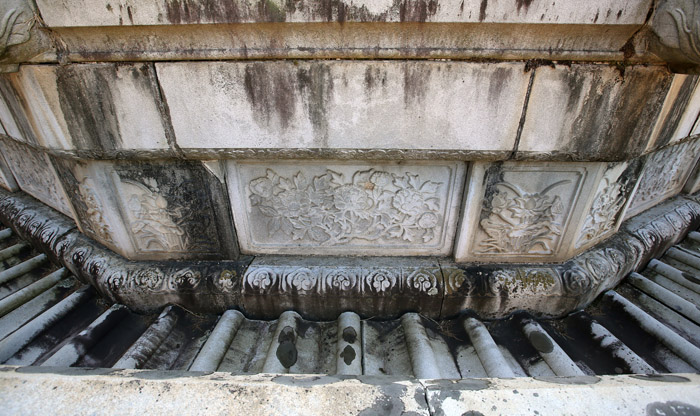
The intricate masonry that decorates the imperial tombs shows the time and effort put into commemorating the late emperor.
Hongneung and Yureung mark the final chapter of more than 500 years of Joseon rule. In the midst of dealing with poverty and outside pressure to open the nation to foreign nationals, and the loss of autonomy under the colonial administration of Imperial Japan, Joseon faded into the pages of history.
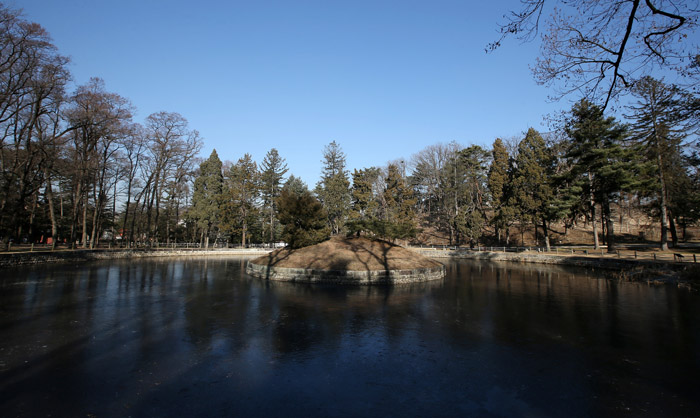
A man-made pond with an island stands near the entrance of the Hongneung tomb.
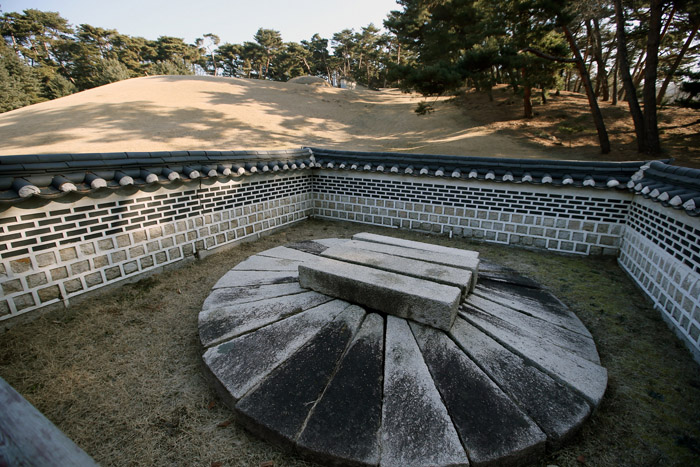
A well for the king by the Yureung tomb still remains in good shape.

The Hongneung tomb is home to the final chapter of the 500-plus years of Joseon history.
By Lee Hana
Photos: Jeon Han
Korea.net Staff Writers
hlee10@korea.kr